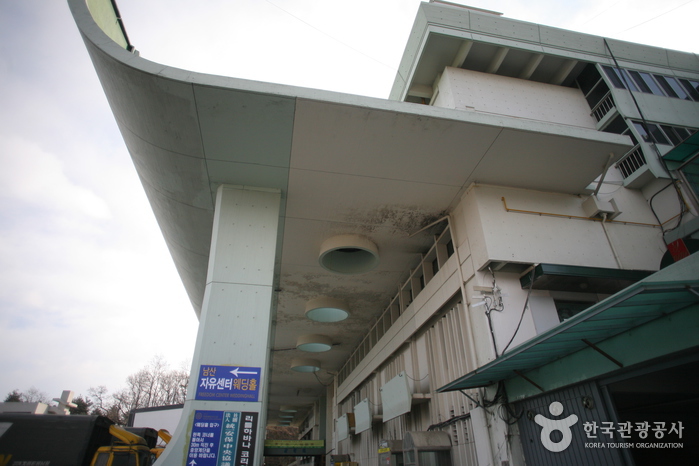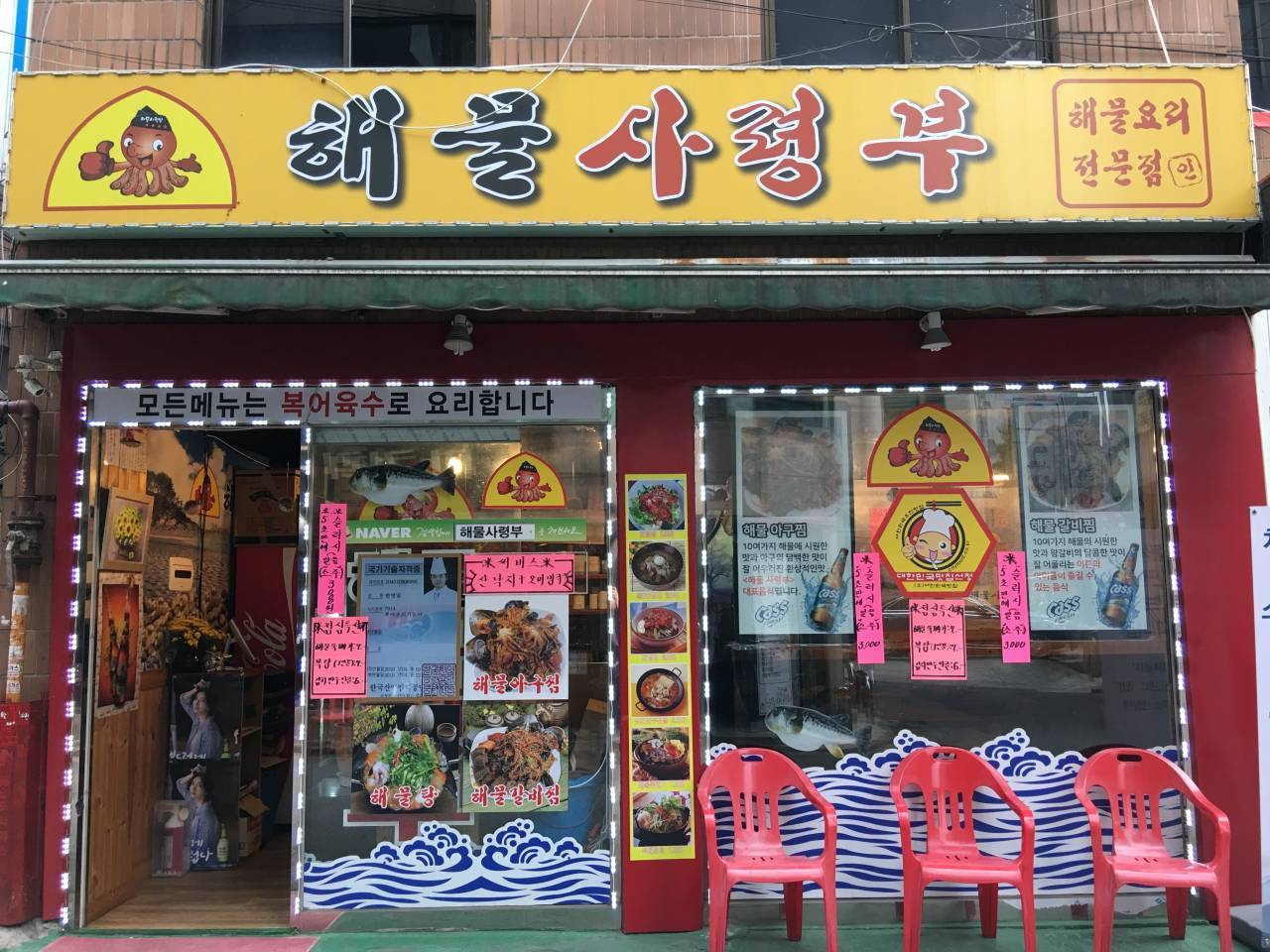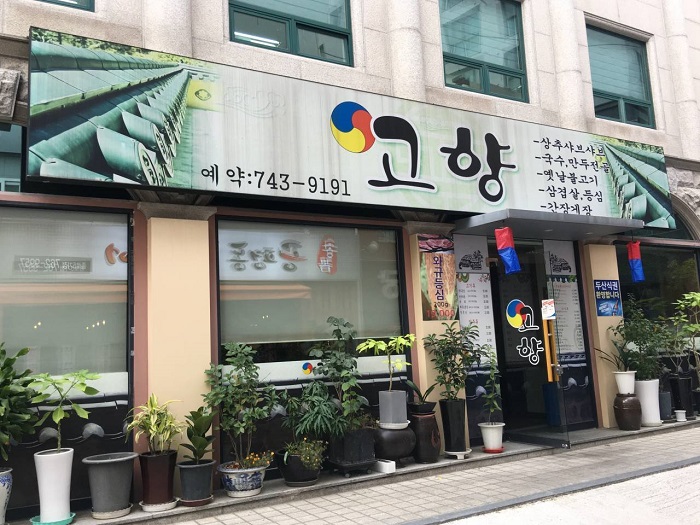Yejiwon (예지원)
3.2Km 2022-09-19
72, Jangchungdan-ro, Jung-gu, Seoul
+82-2-2253-2211
The Yejiwon is located in Seoul Jung-gu Jangchung-dong and has been offering traditional Korean etiquette education programs since its inception on September 16th, 1974. Furthermore, the Yejiwon also serves to introduce the traditional cultures and living cultures of Korean etiquettes to foreigners.
Most programs offered are short-term classes, and reservations can be made on the homepage up to 15 days in advance. Reservations are only available for groups of 10 or more and classes are instructed in Korean only, so it may be a good idea to be accompanied by a guide.
Lush Korea - Gyeongnidangil Spa Branch [Tax Refund Shop] (㈜러쉬코리아 경리단길 스파)
3.2Km 2024-04-23
2F, 10, Hoenamu-ro 42-gil, Yongsan-gu, Seoul
-
Lush Korea - Gyeongnidangil Branch [Tax Refund Shop] (㈜러쉬코리아 경리단길점)
3.2Km 2024-04-19
1F, 10, Hoenamu-ro 42-gil, Yongsan-gu, Seoul
-
Haemul Saryeongbu (해물사령부)
3.2Km 2021-03-19
10, Jong-ro 31ga-gil, Jongno-gu, Seoul
+82-2-763-8882
Blowfish broth is used for all dishes. The representative menu is braised beef short ribs and seafood/braised spareribs and seafood. This is a Korean cuisine located in Jongno, Seoul.
Jangchungdan Park (장충단공원)
3.2Km 2020-03-18
261, Dongho-ro, Jung-gu, Seoul
Jangchungdan Park is located on the northeastern foot of Namsan Mountain. On August 20th, 1895, Empress Myeongseong was killed by Japanese soldiers in Gyeongbokgung Palace and many Korean soldiers such as Yi Gyeong-jik and Hong Gye-hun died while trying to hold back the intruders. In memory of these soldiers, Emperor Gojong built the Jangchungdan Shrine in November 1900 at the current site of the Shilla Hotel guesthouse. The shrine was lost during the Korean War and the area was renovated into a park in 1919.
On September 22, 1984, Jangchungdan Park was designated the 374th neighborhood park of Korea and part of the park was merged with Namsan Park. The remaining area retained the name “Jangchungdan Park” and is still home to cultural assets such as the Jangchungdan Memorial Stone, Supyogyo, Seungjeongjeon, Gwanseongmyo, and Waryongmyo. The park is considered a landmark of patriotism since it contains the 1919 Independence Movement of Korea Memorial Stone and other monuments dedicated to people such as Han Yong-un, Yu Gwan-sun, and Gim Yong-hwan who fought for the independence of Korea.
Suitsupply - Gyeongnidangil Branch [Tax Refund Shop] (수트서플라이 경리단길점)
3.2Km 2024-04-18
89, Hoenamu-ro, Yongsan-gu, Seoul
-
Gohyang (고향)
3.2Km 2021-03-22
15, Jong-ro, 31ga-gil, Jongno-gu, Seoul
+82-2-743-9191
A place where you can try various Korean dishes. This Korean dishes restaurant is located in Jongno-gu, Seoul. The most famous menu is bulgogi.
Namsan Outdoor Botanical Garden (남산 야외식물원)
3.2Km 2022-12-16
323, Sowol-ro, Yongsan-gu, Seoul
+82-2-798-3771
Namsan Outdoor Botanical Garden opened its doors on February 18, 1997 in Hannam-dong, where the residential complex for foreigners once stood before it was demolished in 1994. Covering an area of around 59 ㎡, it is divided into 13 themed gardens with a total 117,132 plants from 269 species. Among this diversity, 60,912 plants from 129 species are tree types and 56,220 plants from 140 species are grass types.
Yuu (유우)
3.2Km 2019-10-02
23, Yeonhui-ro 26-gil, Seodaemun-gu, Seoul
+82-2-3144-2578
Yuu is a fusion dining restaurant that offers gonowada (salted sea cucumber innards), one the
three major gourmet dishes. The restaurant offers a wide variety of a la carte
items, and in partnership with Jo Seon-Ok culinary research center in Japan, strives
to produce savory and top-notch meals for its customers.
Among the diverse gourmet menu the restaurant offers, the most popular dishes include tuna tataki & gonowada and santen sasimi (assorted sliced raw fish). Also prepared and offered are simple
a la carte dishes including charcoal barbeque, grilled dishes on a sizzling iron plate, nabe, ponzu, a la carte, special delicacies. The restaurant is 231.4 ㎡ (70 pyeong) in floor size and has tatami rooms
for the full enjoyment of savory liquor and gourmet meals. Yuu also has a large room for group meetings and business dinners.
Changdeokgung Palace Complex [UNESCO World Heritage Site] (창덕궁과 후원 [유네스코 세계유산])
3.2Km 2025-07-21
99 Yulgok-ro, Jongno-gu, Seoul
Changdeokgung Palace was the second royal villa built following the construction of Gyeongbokgung Palace in 1405. It was the principal palace for many kings of the Joseon dynasty, and is the most well-preserved of the five remaining royal Joseon palaces. The palace grounds are comprised of a public palace area, a royal family residence building, and the rear garden. Known as a place of rest for the kings, the rear garden boasts a gigantic tree that is over 300 years old, a small pond and a pavilion.
The palace gained importance starting from the time of Seongjong, the 9th king of Joseon, when a number of kings began using it as a place of residence. Unfortunately, the palace was burned down by angry citizens in 1592 when the royal family fled their abode during the Imjin War. Thanks to Gwanghaegun, the palace was restored in 1611. Even today, it houses a number of cultural treasures, such as Injeongjeon Hall, Daejojeon Hall, Seonjeongjeon Hall, and Nakseonjae Hall.
Changdeokgung Palace’s garden behind the inner hall, called the "Secret Garden," was constructed during the reign of King Taejong and served as a rest area for the royal family members. The garden had formerly been called Bugwon and Geumwon, but was renamed Biwon Garden, or Secret Garden, after King Gojong came into power. The garden was kept as natural as possible and was touched by human hands only when absolutely necessary. Buyongjeong Pavilion, Buyongji Pond, Juhamnu Pavilion, Eosumun Gate, Yeonghwadang Hall, Bullomun Gate, Aeryeonjeong Pavilion, and Yeongyeongdang Hall are some of the many attractions that occupy the garden. The most beautiful time to see the garden is during the fall when the autumn foliage is at its peak and the leaves have just started to fall.
Though it has been treasured by Koreans for centuries, Changdeokgung Palace and its complex was recognized as a World Cultural Heritage site by the UNESCO World Cultural Heritage Committee in December of 1997 during the committee meeting in Naples, Italy.

![Lush Korea - Gyeongnidangil Spa Branch [Tax Refund Shop] (㈜러쉬코리아 경리단길 스파)](http://tong.visitkorea.or.kr/cms/resource/49/2890649_image2_1.jpg)
![Lush Korea - Gyeongnidangil Branch [Tax Refund Shop] (㈜러쉬코리아 경리단길점)](http://tong.visitkorea.or.kr/cms/resource/01/2890701_image2_1.jpg)


![Suitsupply - Gyeongnidangil Branch [Tax Refund Shop] (수트서플라이 경리단길점)](http://tong.visitkorea.or.kr/cms/resource/00/2890600_image2_1.jpg)


![Changdeokgung Palace Complex [UNESCO World Heritage Site] (창덕궁과 후원 [유네스코 세계유산])](http://tong.visitkorea.or.kr/cms/resource/03/3092503_image2_1.jpg)
 English
English
 한국어
한국어 日本語
日本語 中文(简体)
中文(简体) Deutsch
Deutsch Français
Français Español
Español Русский
Русский